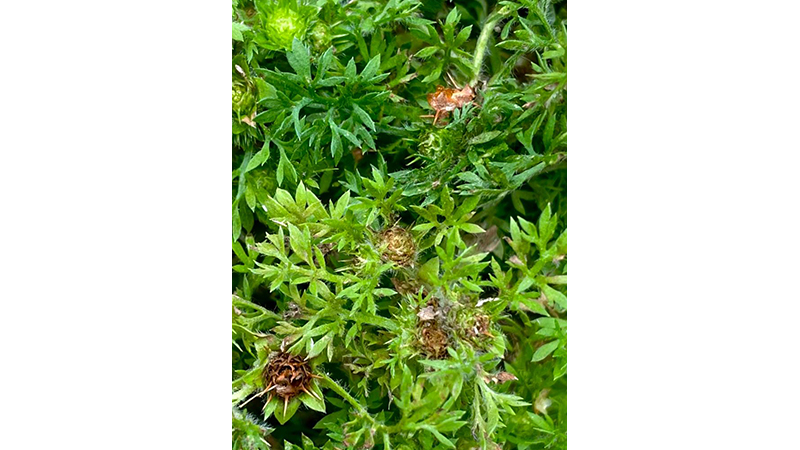The bane of bare feet and doggies; all about burs
Published 11:30 am Sunday, May 30, 2021
|
Getting your Trinity Audio player ready...
|
One practical word of advice for managing lawn stickers, the bane of bare feet: Flip-flops.
Call them stickers, burweed, spurweed, or just %$@#! they are a real pain, both literally and to get rid of. Many gardeners have tried, most fail.
These low-growing distant sunflower relatives, ferny tufts of finely-divided leaves that look like carrot foliage, sprout in Autumn from seed, grow over the winter, make tiny flowers in the spring, and then set new button-like clusters of spurred seeds which are what stick in our feet, hands, elbows or anything else that comes in contact. They are doubly bad for dogs, which have twice as many feet and are unable to pick them out of tender paws.
The most frustrating thing is, by the time the dried seeds start giving us grief, the overwinter annuals are already beginning to die. Spraying them just makes the plants brown, earlier than normal, but we’re still, er, stuck with the stickers. And truth is, spraying them with herbicides this time of the year not only won’t work well on plants that are already dying, but weed killers that are normally tolerated by lawns, can weaken or damage your lawn if applied during the lawn’s sensitive “spring green-up” period.
So, what to do? You can find stuff that will kill them, but which won’t solve this year’s travails. Bottom line is, there are just three ways to handle stickers, and you’re not gonna like one of them.
According to turfgrass weed scientists at MSU, the most effective, albeit inconvenient, method of controlling stickers is to apply a granular pre-emergence herbicide in early fall, before October before the seeds sprout.
Or you can use a liquid herbicide to spray the plants in January or February, when they are small and easier to kill, before they set seed. Whatever will control dandelions, clover, wild onion and garlic, and other late winter and spring lawn weeds will kill sticker plants. But – and this is crucial – it needs to be done in mid-winter when the plants are small and tender, before they flower and the lawn starts greening up.
Important frustrating note: Because I don’t work with pesticides a lot, I can’t keep up with ever-changing brands of what products do what the best. Main thing to remember is that not all weed killers are effective or safe for your lawn.; some are specific to certain kinds of weeds (true grasses vs. all others, collectively called “broadleaf” weeds), and many cannot be applied the same on all kinds of grass or at the same strengths. Put plainly, what is safe to use on different weeds in Bermudagrass may kill St. Augustine or centipede, and vice versa. So, just as with insecticides, especially on edible crops, read labels before buying or applying any kind of weed killer.
But pretty much the easiest and most effective way to control stickers, is to simply take better care of your lawn. Unlike perennial weeds that can poke up from underground bits, stickers and other weeds that grow from seed need sunshine to sprout and grow. When you ask about lawn weeds, I hear you saying your lawn is too sparse to shade out most weeds. Unless you do something to thicken up the grass, you will have these weeds year after year, and regular chemotherapy can quickly get old.
So, mow high, fertilize lightly, water deeply at least once a month without rain, and many of your lawn weeds will disappear.
Unable or unwilling to do all that? Flip-flops. Now if someone could just come up with doggy flip-flops.
Felder Rushing is a Mississippi author, columnist, and host of the “Gestalt Gardener” on MPB Think Radio. Email gardening questions to rushingfelder@yahoo.com.






